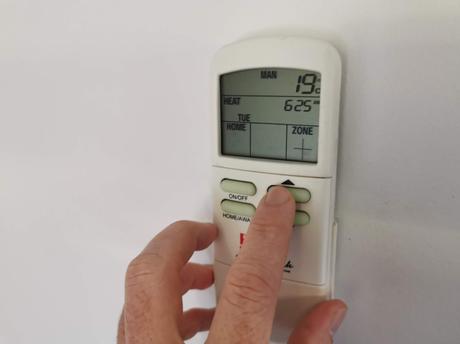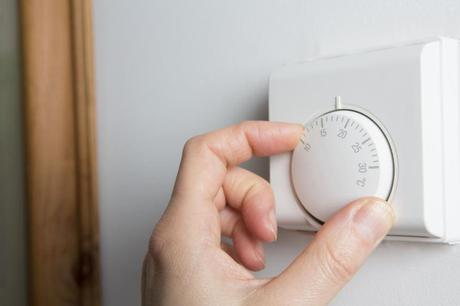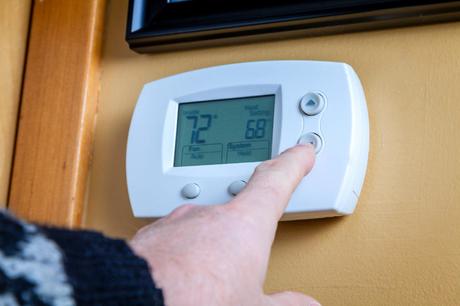Thermostats are simple machines in every household, but they have two major impacts on our lives. They keep us comfortable in our homes every day and they decide our fate when it comes to the monthly utility bill. This is why knowing the different types of thermostats is essential to maximizing your comfort and minimizing your bills.
This guide goes over the main types of thermostats, their designs and uses, and which you should choose based on your needs. Since these devices are in practically every home, and they govern how efficient your heater is, it pays (literally) to know what you're buying and what will work best for your situation.

Mechanical vs Digital Thermostats
Mechanical Thermostats

Mechanical thermostats are the older version. They heat and cool your water by using principles of thermal expansion that generate electricity using metal strips or gas. This expansion moves discs that activate the mechanism (you can see how they work here).
The later gas models use the gas's expansion and contraction to operate metal discs that change the thermostat's settings. This allows them to react more quickly to changes in temperature, saving you money by not running when the system isn't needed.
Pros
- Their installation is cheaper
- Due to their moving parts, they are more resistant to power outages and fluctuations
- They are more familiar to most people and much easier to use
- Thermostat troubleshooting is quite easy with a simple device
Cons
- A longer delay on temperature changes
- Fewer options when it comes to control and customization
- Expensive maintenance
Digital Thermostats

By contrast, digital thermostats simply use modern technology to sense the temperature of the room and use that information to turn on the heating or cooling system. This is a more direct, and therefore more efficient, means of controlling the circuits in the thermostat that operate your HVAC.
The negligible computing power needed in most digital thermostats makes them basic but effective managers of your house's temperature. These models are getting smarter, however, as discussed below, and are quickly getting more options and capabilities when it comes to managing your settings.
Pros
- They offer many more options in terms of temperature control
- They are programmable to your specifications
- They are more energy-efficient
- Their response to temperature changes is much more immediate
Cons
- They take longer and cost more to install
The Different Types of Thermostats
The thermostat is the boss of the HVAC system - it decides when your air and heat turns on and off. This means that the type of thermostat you get heavily influences your family's comfort and determines the financial burden of that comfort at the end of every month.
Two main categories decide what kind of thermostat you will buy. They are: how the device itself works (mechanical or digital) and how it is programmed (non-programmed, programmed, or smart). We'll go over each type below, compare them, and give you the best shot of picking the one that best suits your needs.
The Takeaway
Thermostats vary wildly in price, but the model you choose will determine not only your family's comfort in their home but also your monthly utility bill.
When choosing the type of thermostat that you buy, you are essentially choosing the convenience of the options vs the price of the installation. Old mechanical and non-programmable digital thermostats are the cheapest to install but come with the fewest efficiency options.
As you progress higher in those options up to the latest smart thermostats, which use algorithms to detect your preferences and automatically employ them for you, you should also plan to spend more. Even though it may seem like an expense at first, the investment could be well worth the payout in comfort.
